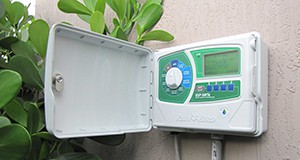Evapotranspiration is the amount of water that is released into the atmosphere through evaporation and plant transpiration. An evapotranspiration irrigation controller is a device that uses data about the landscape, the type of irrigation system, and local weather conditions to determine when and how much to irrigate. This 5-page fact sheet written by Paul Monaghan, Ondine Wells, Michael Dukes, Maria Morera, and Laura Warner and published by the Department of Agricultural Education and Communications explains how the technology functions as well as how to install, program, operate, and maintain an ET controller for a money- and water-wise sustainable home landscape that’s lush and beautiful.
http://edis.ifas.ufl.edu/wc237
Tag: Irrigation Efficiency
Agricultural Management Options for Climate Variability and Change: Variable-Rate Irrigation (AE490)
 Most fields are not uniform because of natural variations in soil type or topography. When water is applied uniformly to a field, some areas of the field may be overwatered while other areas may remain too dry. Variable-rate irrigation technology gives farmers an automated method to vary rates of irrigation water based on the individual management zones within a field and avoid irrigating roadways, waterways, wetlands, and other non-farmed areas within a pivot. This 3-page fact sheet was written by Calvin Perry, Clyde Fraisse, and Daniel Dourte, and published by the UF Department of Agricultural and Biological Engineering, July 2012.
Most fields are not uniform because of natural variations in soil type or topography. When water is applied uniformly to a field, some areas of the field may be overwatered while other areas may remain too dry. Variable-rate irrigation technology gives farmers an automated method to vary rates of irrigation water based on the individual management zones within a field and avoid irrigating roadways, waterways, wetlands, and other non-farmed areas within a pivot. This 3-page fact sheet was written by Calvin Perry, Clyde Fraisse, and Daniel Dourte, and published by the UF Department of Agricultural and Biological Engineering, July 2012.
http://edis.ifas.ufl.edu/ae490
